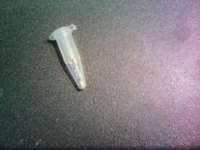|
--------------------------------------------
Date: Fri, 6 Jan 2017 20:24:21 +0000
From: "thornton-d1@sky.com"
Subject: Re: [Aroid-l] Alocasia pollen drop update
To: Aroid Forum
Message-ID:
<1483734261.26369.YahooMailMobile@web173102.mail.ir2.yahoo.com>
Content-Type: text/plain; charset="utf-8"
Thank you so much for that info. Neither plant seems to have
set fruit. The amazonica is producing another flower. Are
amazonica always hybrids that can't produce pollen? So I
need a species then? How are new varieties produced in mass
I wonder for the plant market? They must be pollinated by
species and are not self- fertile. I guess Alocasia
macrorriza can't pollinate Alocasia amazonica as they
are different species.
David
-------------- next part --------------
An HTML attachment was scrubbed...
URL: http://www.gizmoworks.com/mailman/private/aroid-l/attachments/20170106/33799cae/attachment.html
------------------------------
_______________________________________________
Aroid-L mailing list
Aroid-L@www.gizmoworks.com
http://www.gizmoworks.com/mailman/listinfo/aroid-l
End of Aroid-L Digest, Vol 145, Issue 4
***************************************
_______________________________________________
Aroid-L mailing list
Aroid-L@www.gizmoworks.com
http://www.gizmoworks.com/mailman/listinfo/aroid-l
| 


